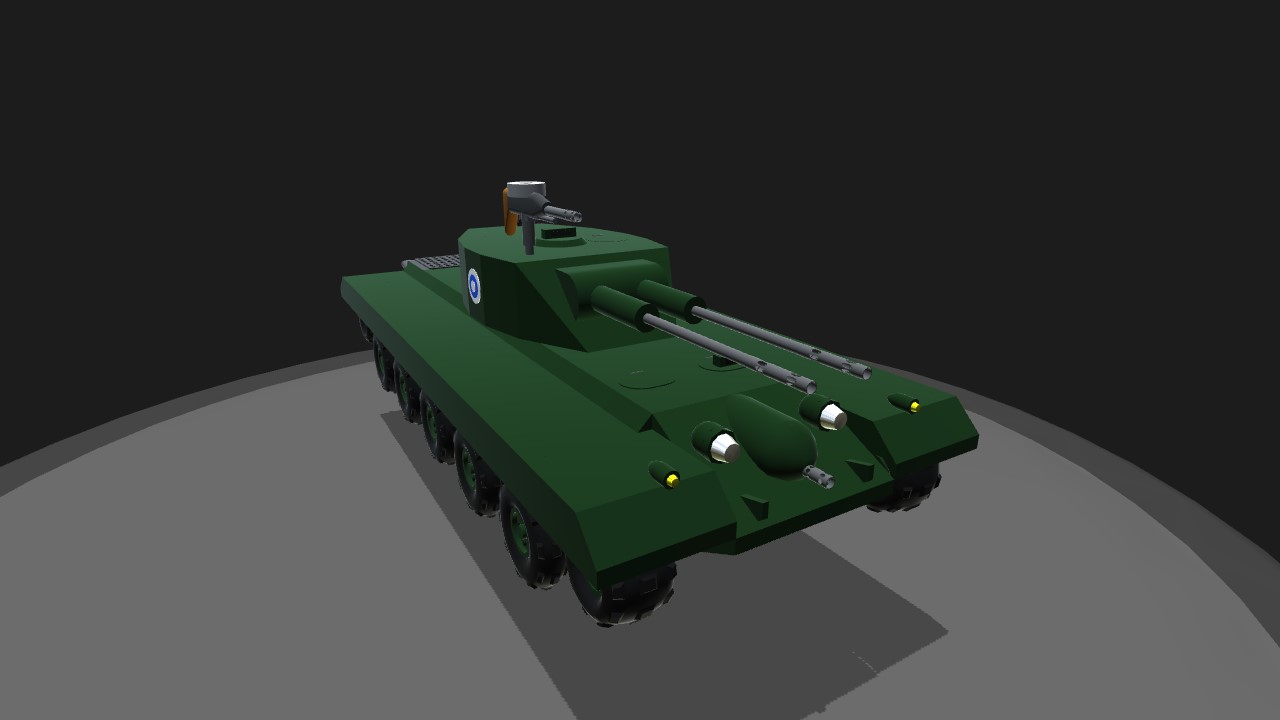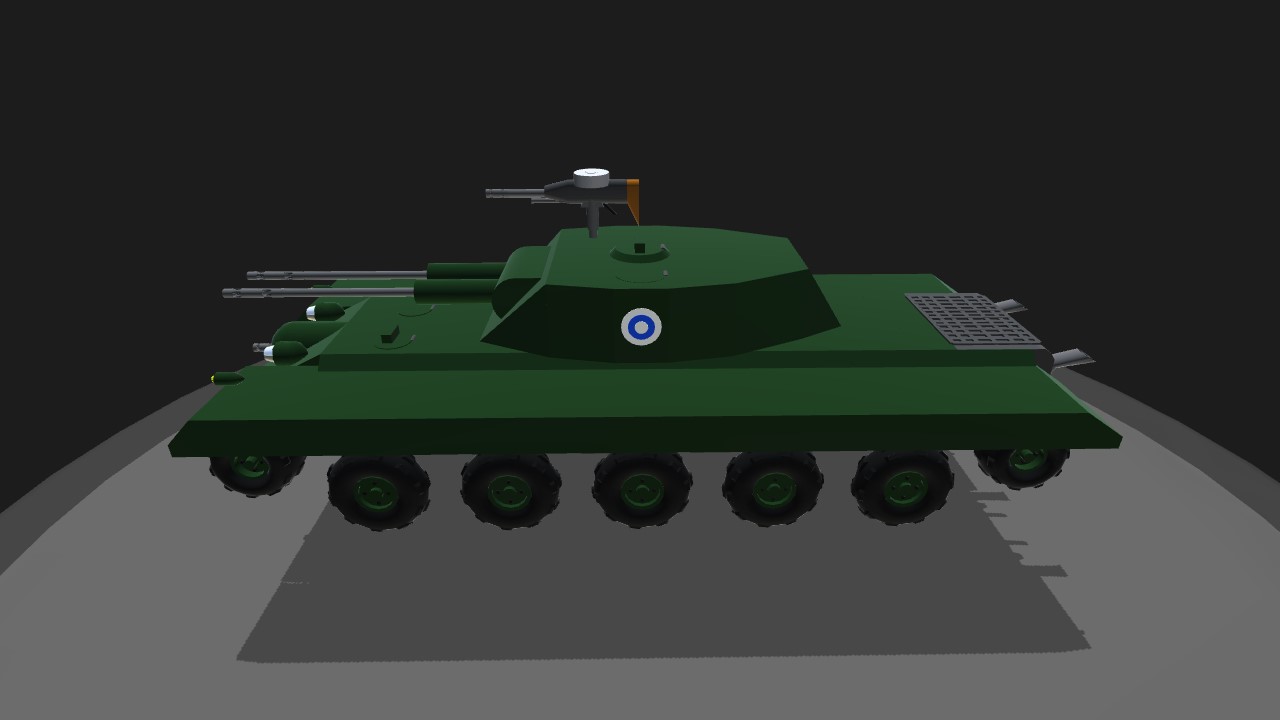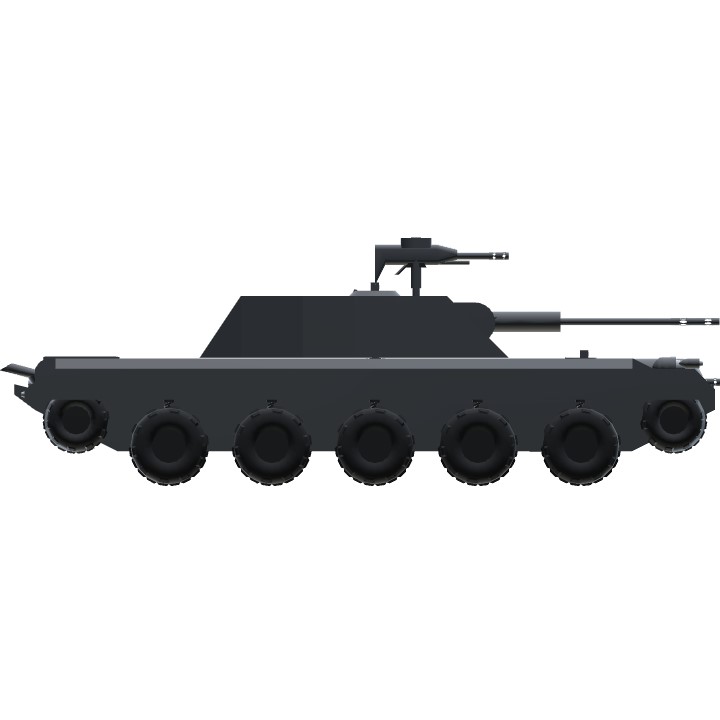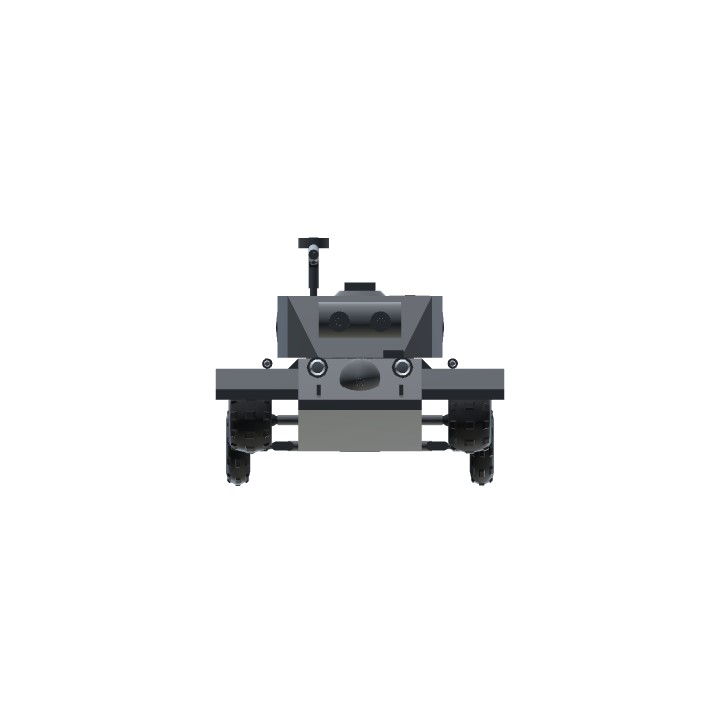The P-44a Medium Tank (The "P-" prefix was used on account of the Finnish word for Tank, "Panssari,") was a parallel departure from German design strategies in which the belly was low to the ground and tracks were comparatively narrow. The P-44 hull design would include wider tracks and an elevated hull while still remaining narrow enough for passage through most roads.
Propelled by a single imported 150 HP Maybach HL 45 P engine normally, both models of the P-44 were unique in that they had a secondary Maybach HL 38 TR producing 100 HP, under license production with Sisu, for emergency power. This was a measure both to conserve on fuel for maximum range and to avoid losses as a result of the loss of control in combat - a fate many of her Soviet and German contemporaries had a predisposition for. This required the engines to be kept in good working order and to operate at peak performance in hill covered terrain or when faced with steep inclines. Thus it was not uncommon for P-44's to burst seals on their primary engine and for their crews to nurse their crippled vehicle home on only their secondary engine. Combined with the fact that maintenance had to be conducted on the engine from inside of the vehicle or to swap out engines required the entire turret to be removed by crane made the P-44 quite unpopular with field engineers.
Remarkably, by 1944, most of Germany's medium and heavy tanks were using far higher horsepower engines than the P-44's twin engine configuration combined yet the simplistic and easy maintenance chassis and unique drive capabilities may have explained the P-44's performance despite the aforementioned shortcomings with engine maintenance.
Armor wise the P-44 design was no slouch when compared to German or Soviet types. The Finns used the P-44, in both varieties, as a Medium Tank while the Soviets gave it the wide berth deserving of a heavy tank. The turrets were heavily angled and consisted of thick armor plate with a mantlet slighly superior to that used on the Panther of the Wermacht. Furthermore the turrets were well fitted providing very narrow "shot traps" beneath the fore and aft of the turret when turned 45 degrees in either direction between the bottom of the turret where only 15 mm of armor was available and the armored plating that covered the top of the "tracks." The hull was similarly heavily angled with only the half-skirts providing a direct point of impact which even then provided a fair amount of armor. Besides these features the armor to the rear of the vehicle was comparatively thin and vulnerable to direct and square attacks heavier than 45 mm, which could potentially knock out the cooling and exhaust system for the twin engines. A direct and square hit from a high velocity 75-76 mm cannon could potentially cause the fuel tank to explode.
The Finns were well aware of this weakness and were very careful in their use of tank destroyers and scout tanks to ward off flanking maneuvers by vehicles with heavy weaponry.
The P-44a variant was produced prior to her sister design as negotiations to acquire a significant number of Krupp 8.8 cm KwK 36 L/56 Cannons bogged down. Instead of this armor-busting cannon the P-44a was more suited to destroying fixed artillery positions, machine-gun nests, providing heavy infantry support and even capable of anti-aircraft artillery fire as it was fitted with a pair of LKK 4 cm/L57 Auto-Cannons with a higher rate of fire than the original KwK 28 4 cm/L60 Auto-Cannons (40 mm/L60 Bofors Auto-Cannons.) Its only secondary armaments were a pintle mounted MG 137(t) and a hull mounted MG of the same type, both of 7.92 mm Mauser cartridge type.
Although easily capable of knocking-out any light or cavalry tanks fielded by the Soviets they would less frequently engage the slower heavy tanks deployed to the Northeastern front by knocking out their tracks, gunning down crews that scrambled to repair them or after crippling their monstrous opponents, close in via aggressive 'wolfpack' style tactics, firing for the "shot trap" beneath the back of their turrets at near point blank ranges. The practice of attacking other heavy tanks with the P-44a largely came to a close with the introduction of her sister design.
Forward & Reverse - Pitch
Steering - Roll
Brake ...
Bear in mind this is a 47 and nearly 3/4 ton vehicle, maximum safe speed to drive is roughly 35 mph depending on terrain. On declines speed will quickly get away from you. Use engine braking or brakes to keep within a safe margin. Remember; Tanks were not meant to be speed demons, their horsepower was intended to create a moving bunker of armor and devastating weaponry through hostile territory and uneven terrain. The P-44a has the advantage of emergency power if it becomes bogged down. See the Control Groups for details.
AG 1 - Activates the turret, VTOL to rotate, Trim to elevate and decline the two auto-cannons.
AG 2 - Activates the pintle mounted machine gun; Yaw to rotate the field of fire side to side.
AG 3 - Activates the hull mounted machine gun; Yaw to rotate the field of fire side to side.
AG 4 - Activates the emergency power engine to add a boost of power to the "treads" to climb steep inclines. To conserve on fuel, deactivate when unnecessary.
AG 5 - Headlights & tail lights.
AG 6 - Right turn signal.
AG 7 - Left turn signal.
Camera 1 - Tank Commander's periscope.
Camera 2 - Driver's periscope.
Notes: The tracer colors for these weapons are, to the best of my knowledge historically accurate. The rate of fire, calibers, projectile weights and so on for the Czech version of the Lewis Machine Gun which used the 7.92 mm Mauser ammo, the same as many German Machine-Guns and the 40 mm Bofors L/60 has been adjusted accordingly for historical accuracy - with tweeks to account for local improvements.
Although Finland had minimal direct combat against the other allies as their war was one of defending Finland from the expansionist policies of the Soviet Union in reality, with the success of Operation Sealion and the stages of combat that have followed, Finland was forced under diplomatic pressure to declare war on the remaining allies - further cementing their fate to Nazi Germany.
Shared Soviet intelligence with the Western allies resulted in American troops coining the P-44 series as "The Killroy," due to the placement of headlamps and the pronounced central armored housing for the hull mounted gun.
Finally, this build is for @General360 role-play alternate WW2 history. This vehicle, despite the attention to historical accuracies with its weaponry, is fictional.
Specifications
General Characteristics
- Created On Windows
- Wingspan 11.5ft (3.5m)
- Length 28.7ft (8.7m)
- Height 9.7ft (3.0m)
- Empty Weight 93,408lbs (42,369kg)
- Loaded Weight 95,340lbs (43,245kg)
Performance
- Wing Loading 47,239.5lbs/ft2 (230,643.3kg/m2)
- Wing Area 2.0ft2 (0.2m2)
- Drag Points 6683
Parts
- Number of Parts 324
- Control Surfaces 0
- Performance Cost 1,400







Thank you all for your' support, @GravityGun913, @Johndfg, @TheOwlAce and @Stampede. I don't know how I missed most of your' upvotes but with Stampede taking a look I realized; Oh, someone had noticed this unorthodox war machine! XD
@General360